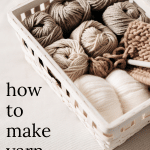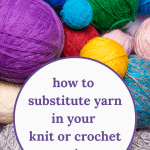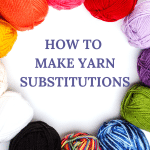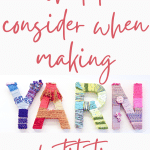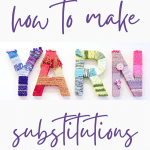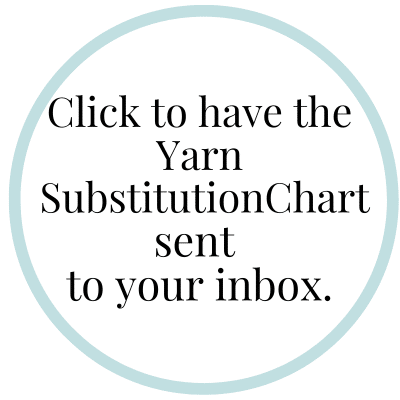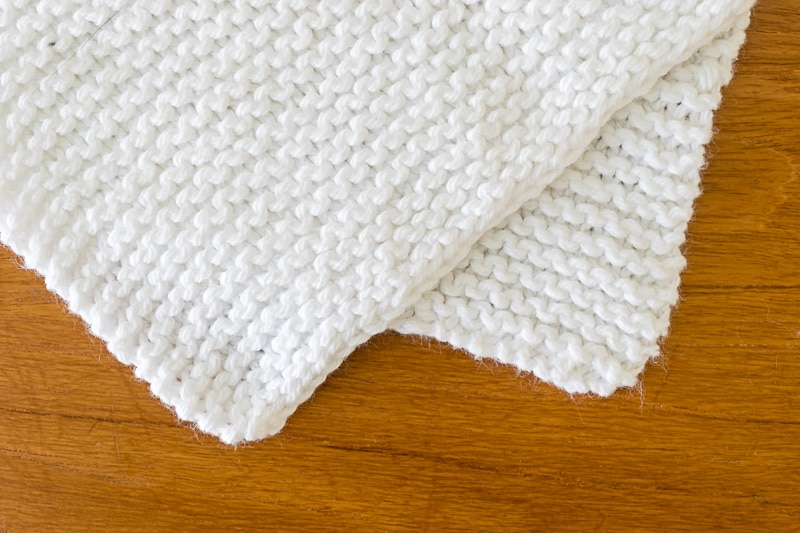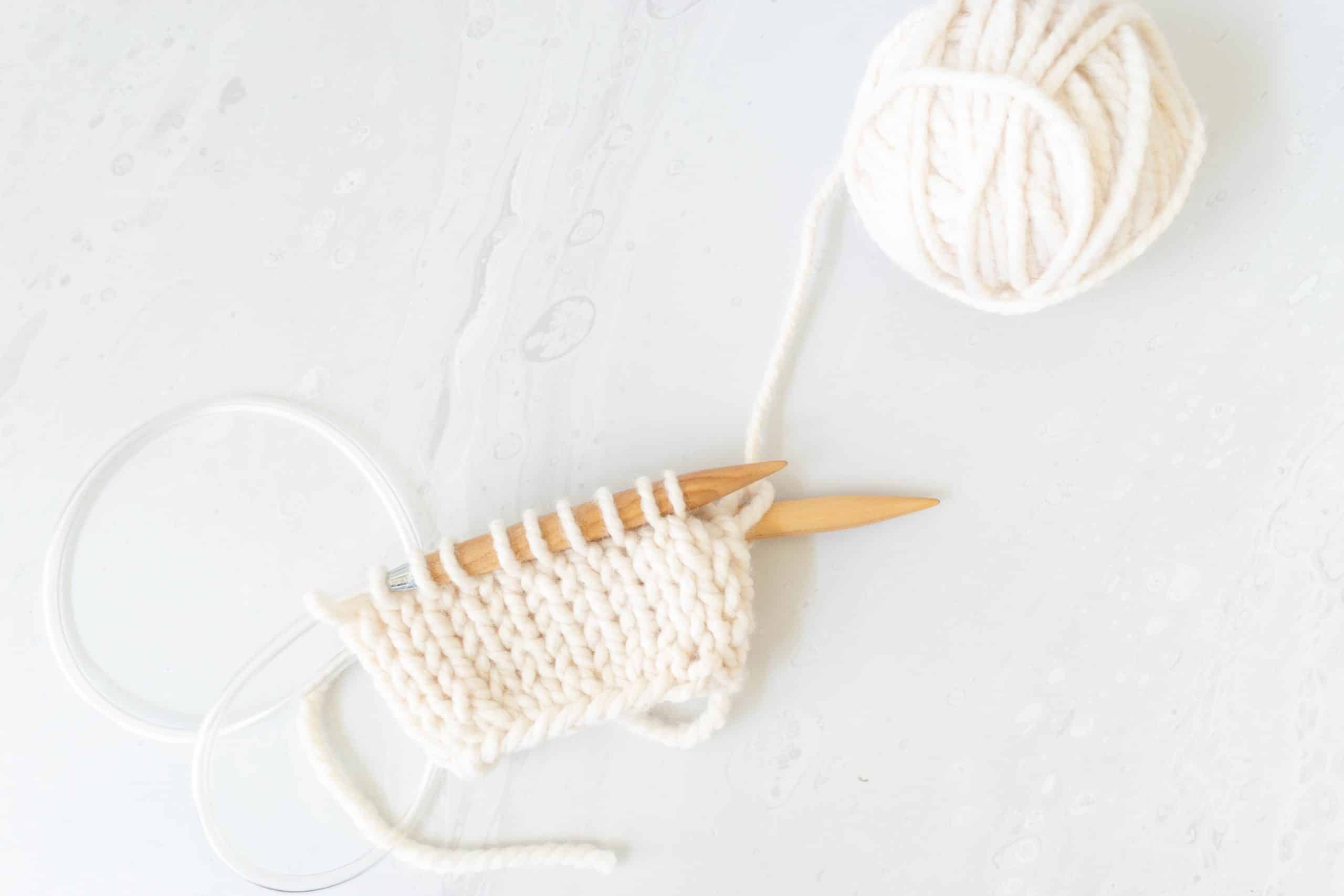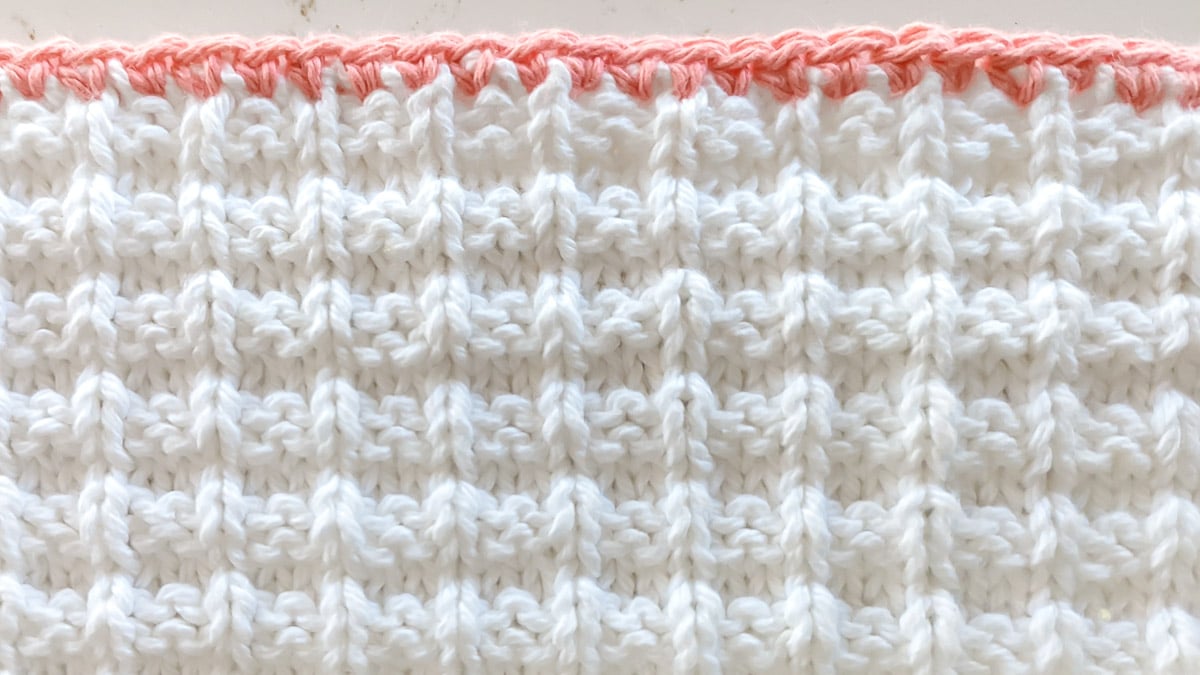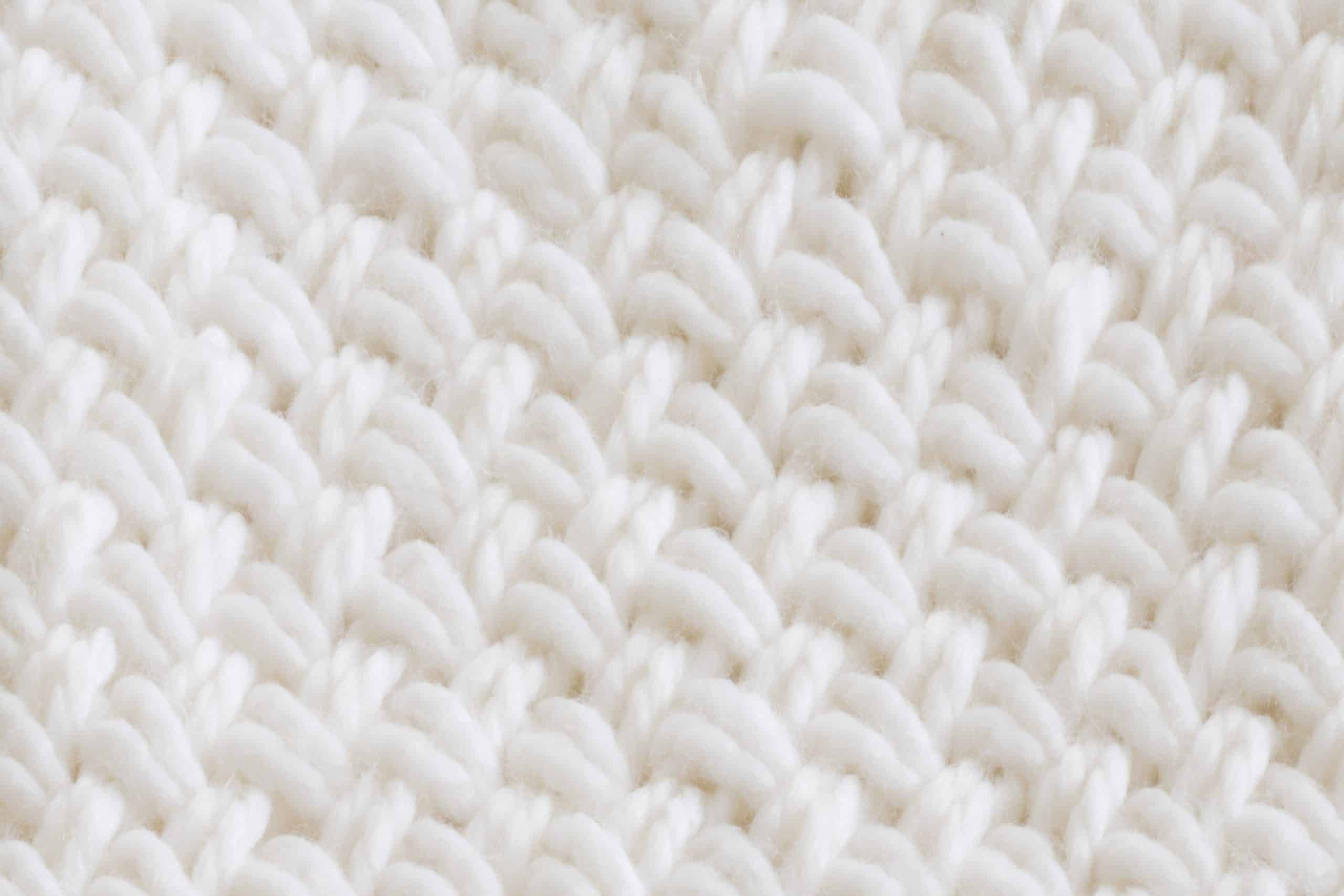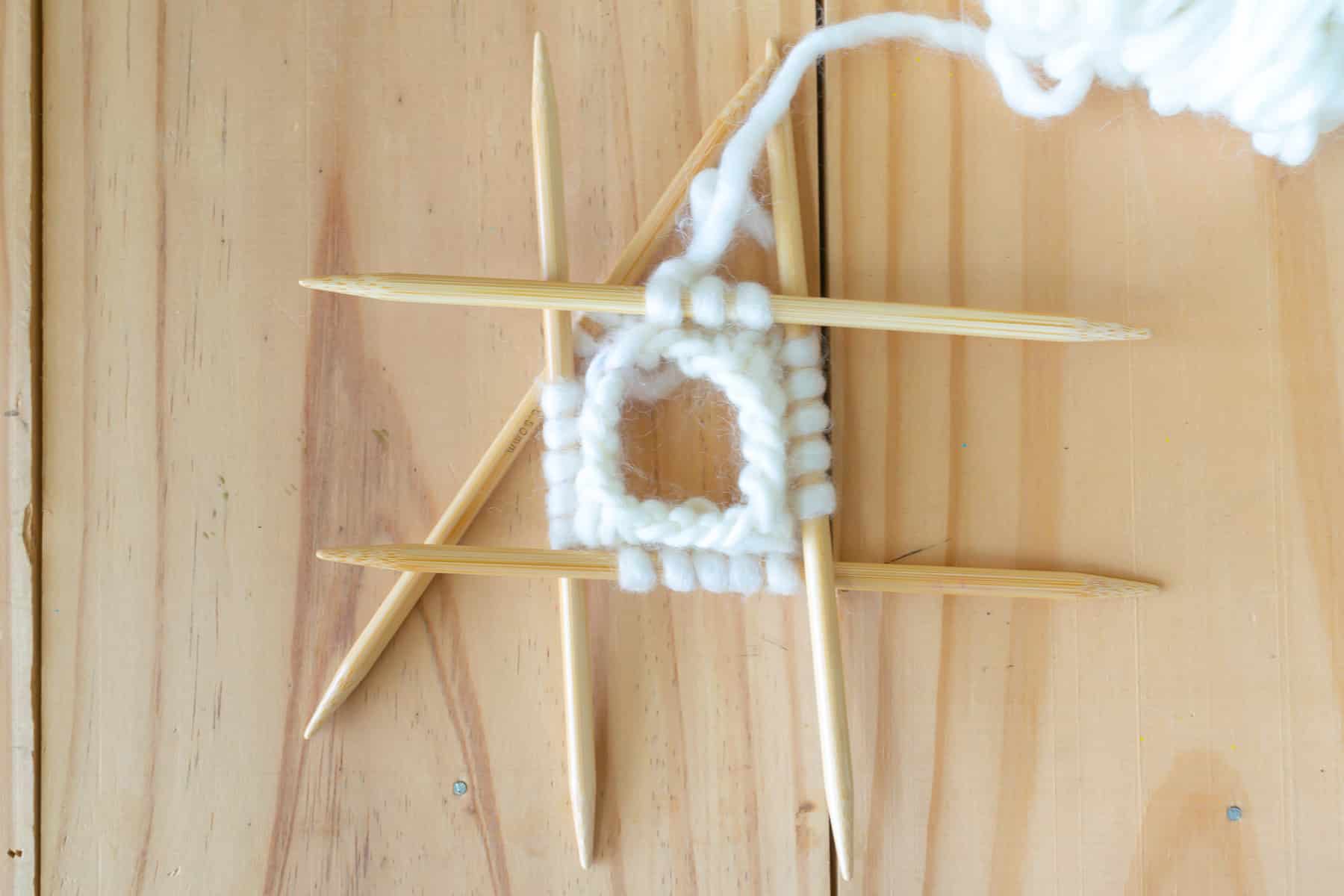Yarn Substitutions
As a knitter or crocheter, you may want to start a new project, but the pattern calls for a specific yarn that you don’t love or can’t find. This is where yarn substitution comes in handy. Yarn substitution is substituting one yarn for another in a knitting or crochet pattern. It can save you time and money, and it can also help you create a unique project.
I frequently receive emails from knitters asking if they could substitute X yarn for Y yarn in one of my patterns. And I’ve received emails specifically asking me to write a post explaining yarn substitution. I hope this post helps anyone struggling to understand how to substitute yarn for knit and crochet projects.
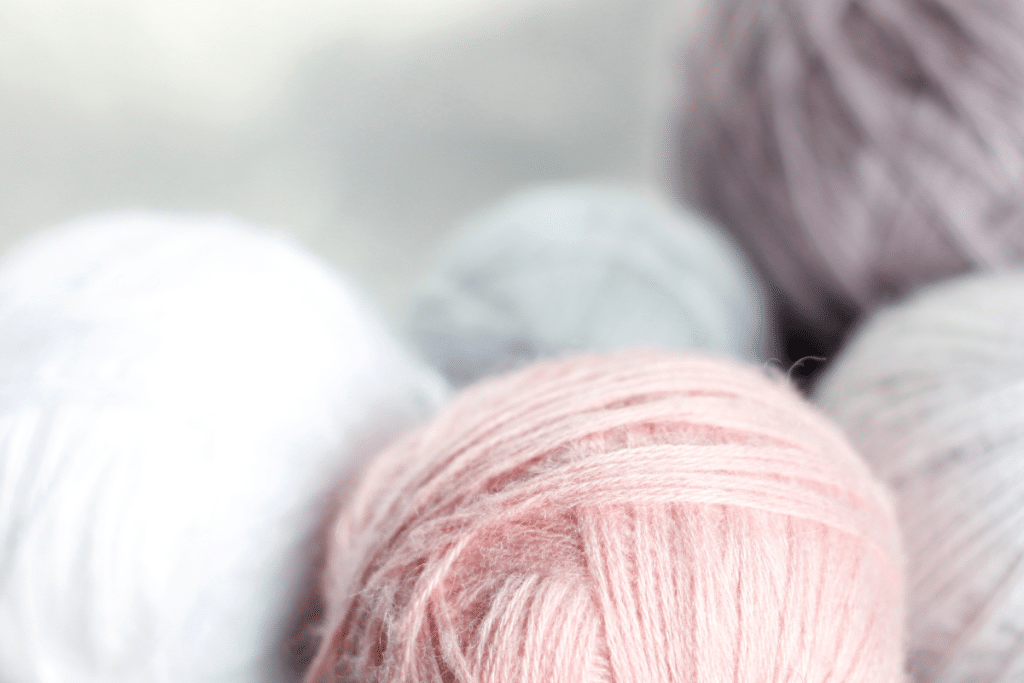
Table of Contents
factors to consider when substituting yarn
Finding a suitable yarn substitution requires you to consider several characteristics of the original and new yarn you are considering swapping in. You’ll likely start with the yarn weight, but the fiber you want is just as important. And you can’t ignore yarn density in yarn substitution, either. Then you also will want to consider the characteristics of the original pattern that are important to you and the color and additional yarn characteristics that interest you.
It seems like a lot, but once you’ve worked through it once or twice, the process will fall into place. And make sure to download the Yarn Substitution Guide to include in your Knit Organizer. You can find it in the Library or click the button below, and I’ll get it right in your email inbox.
yarn weight
When substituting yarn, one of the first factors to consider is the weight of the yarn. Look at the weight of the yarn recommended by the pattern designer and try to find one within that same weight group.
It’s hard to say, ‘this is the first thing you should consider,’ because you may decide you want a specific fiber, which would be your first decision. But in any event, yarn weight should be one of the first factors you consider.
Yarn weight refers to the diameter or thickness of the yarn and is typically indicated by a number from 0 to 7, with 0 being the thinnest and 7 being the thickest. The yarn’s weight can greatly affect your project’s outcome, as it determines the size and drape of the finished piece. If you substitute a yarn that is too thin or thick, the final product may be too small or too large, and the stitch pattern may not look the same.
And keep in mind that yarn weights are categories, and they include ranges. There is no absolute, but it is a great first-step guide.
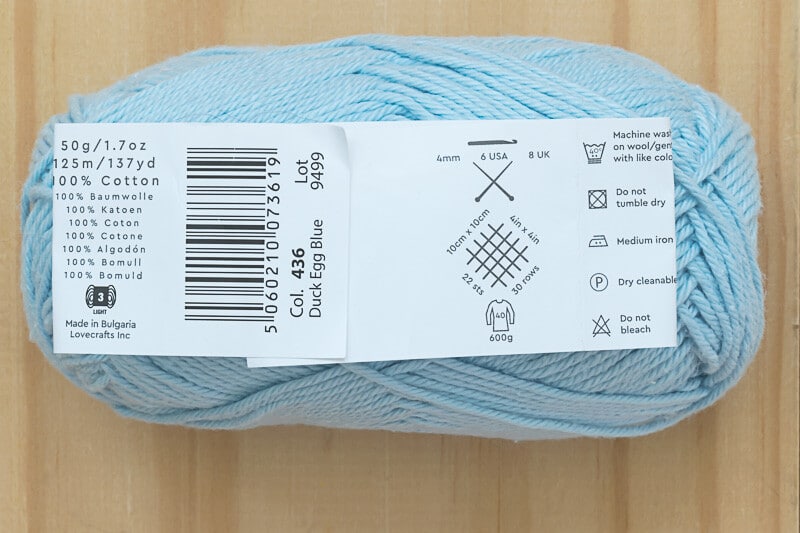
To determine the weight of your yarn, locate yarn information on the pattern or use a yarn weight chart. If you need a yarn weight chart, you can nab this one in the Library or click here to have one emailed. And for a more in-depth conversation about different types of yarn, different fibers, and how yarn weights are determined, pop over to this All About Yarn post.
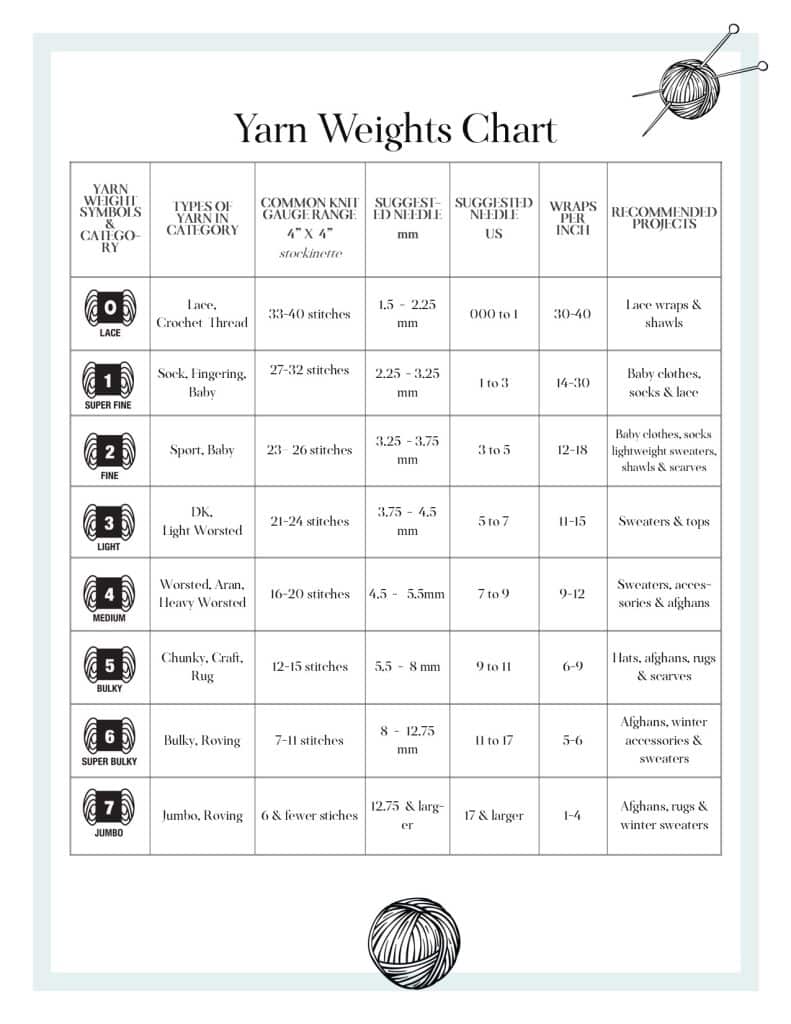
If you don’t have a label, give this trick a try. Wrap the yarn around a pencil with gentle tension, not too tight or loose. The wraps should lay side by side without any overlap or significant gaps between strands. Then count the number of wraps within one inch, and you get a reasonably accurate sense of the weight. Use the free, printable Yarn Weights chart to help you figure it out.
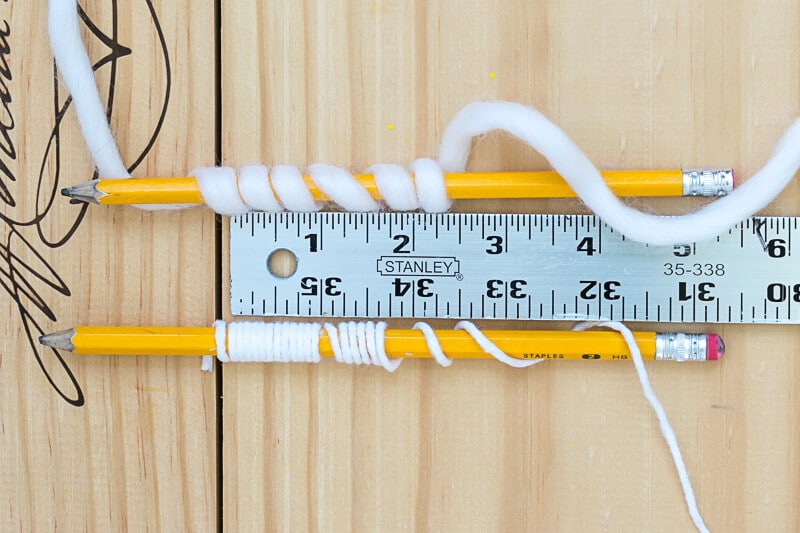
Once you have determined the weight of your yarn, you can move on to the next step in figuring out a good yarn substitute.
If you want to try a different weight yarn, go for it, but it will be easier if you don’t stray too far from the recommended yarn group (like from DK to worsted).
Yarn weight is significant, but it is just a jumping-off point for figuring out the best yarn substitution for your project.
fiber
Choosing a fiber is another critical decision because different fibers have significantly different properties. You can assume that the pattern designer most likely wrote the pattern taking into consideration the properties of the yarn they chose.
So, consider the fiber content of the original yarn and choose a substitute with similar fiber content. For example, if the original yarn is wool, you may want to substitute it with another wool yarn, animal fiber, or a wool blend yarn. If the original yarn is cotton, you may want to substitute it with another cotton yarn, plant fiber, or a cotton blend yarn. And, if the original yarn is alpaca, you may want to substitute it with another alpaca yarn or a similar luxury fiber, like cashmere. Check out the All About Yarn post to learn more about the different fibers used to make yarn.
different fibers have different characteristics
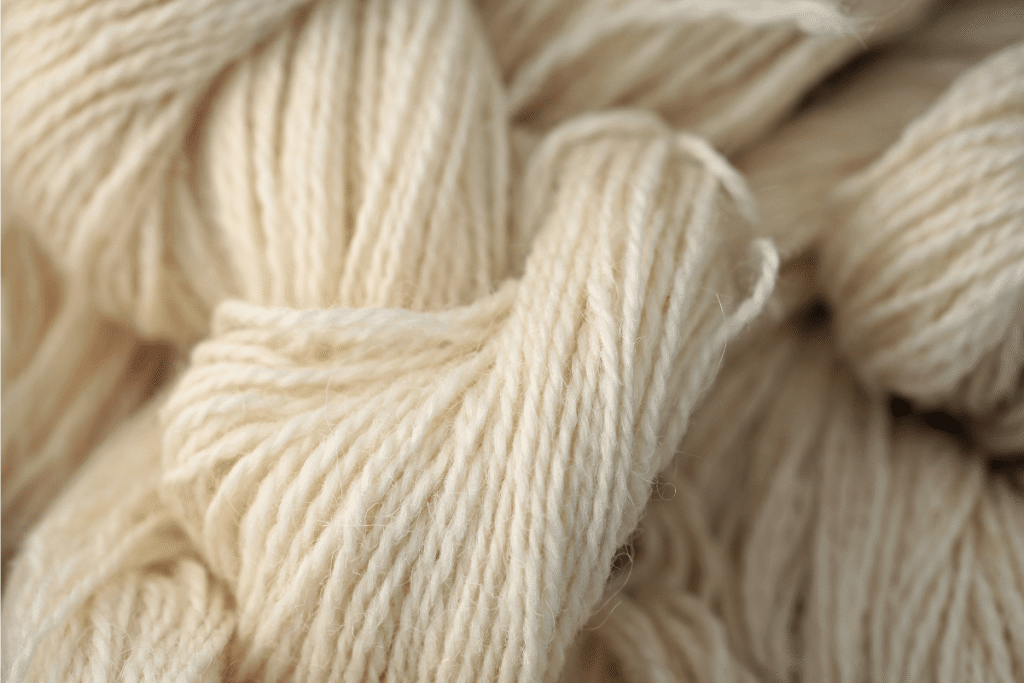
plant-based fiber, animal fibers + synthetic fibers
Plant-based fibers (cotton, linen, hemp, flax, and bamboo) are generally heavier and less elastic than animal fibers (wool, angora, silk, and cashmere). So, garments knit with plant-based fibers will be more likely to sag than garments knit with animal fibers. Because of their inelasticity, plant-based yarns will show inconsistencies in tension more than animal-based yarns.
A lace shawl made with a light and airy mohair yarn would have a completely different look and feel if you substituted it with heavier cotton or linen. If you are knitting cables, while cotton gives it a lovely stitch definition, the weight of the finished fabric may pull it out of shape. On the other hand, light, spun wools balance the weight of the cables with still enough stitch definition.
Synthetic fiber yarns have a wide range of stretch depending on the fiber and construction of the yarn. You can determine the elasticity of an acrylic yarn by observing if the fibers are twisted. More twist typically means more stretch, whereas less twist means a more inelastic yarn.
superwash v non-superwash wool
Superwash wool has been treated so that it can be machine washed. Garments knit with superwash wools generally have more drape and less body than non-superwash garments. Non-superwash wools will ‘fluff’ up more than superwash wools when washed. You may want to avoid superwash when knitting cables, as you won’t get the crisp definition you are looking for.
sock yarn
One type of yarn that can be tricky to substitute is sock yarn. Sock yarn is typically a fingering weight yarn with a blend of wool, nylon, or other synthetic fibers. It’s designed to be durable and machine washable, making it ideal for socks and other items that receive a lot of wear and tear.
When substituting sock yarn, choosing a yarn with similar properties is important. Look for a yarn that is a fingering weight with a blend of wool and nylon or other synthetic fibers. It should also have a tight twist to prevent the yarn from breaking or wearing out too quickly.
The best rule of thumb is to stick as close as possible to the fiber type of yarn the pattern was designed to use.
when in doubt, swatch!
gauge
In addition to the weight and fiber content, you should also consider the gauge of the original yarn. Gauge refers to the number of stitches and rows per inch that the pattern calls for. If you substitute a yarn with a different gauge, the final product may not fit correctly or require pattern adjustments.
To determine the gauge of your yarn, you can create a swatch by knitting or crocheting a small sample of the stitch pattern called for in the pattern. Measure the swatch and compare it to the gauge called for in the pattern. If the gauge is different, you may need to adjust the needle size or the stitch pattern to achieve the correct gauge.
Remember, your needle size determines the size of your stitch and the amount of space between stitches. Smaller needles create smaller stitches and less space, so you will get more stitches in an inch than you will with bigger needles.
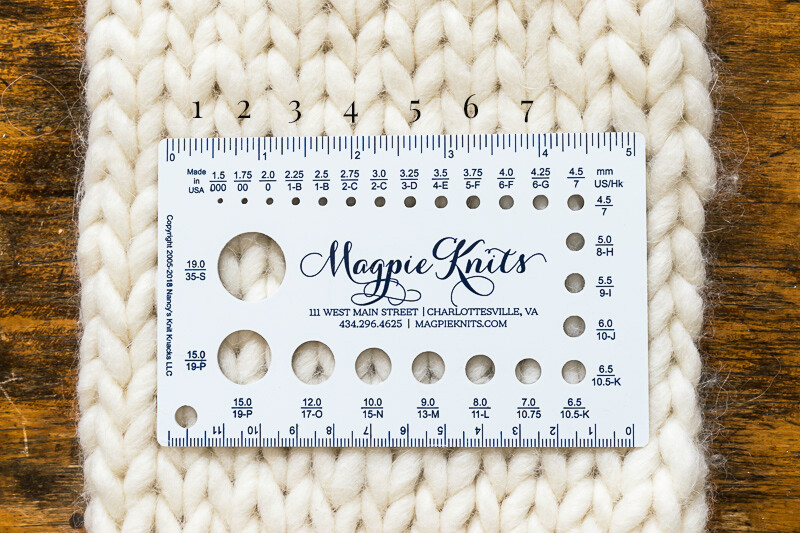
yarn density
Yarn density can also be called yardage or YPP (yards per pound) and is very important when looking for substitution yarn. Yarns of the same weight can have widely varying yarn densities. Yarn density is determined by the fiber used and how it was made, which determines how much air is in the yarn. The denser the yarn, the less air is incorporated into the yarn. Denser yarns create products with more drape, are more likely to sag, and will be heavier.
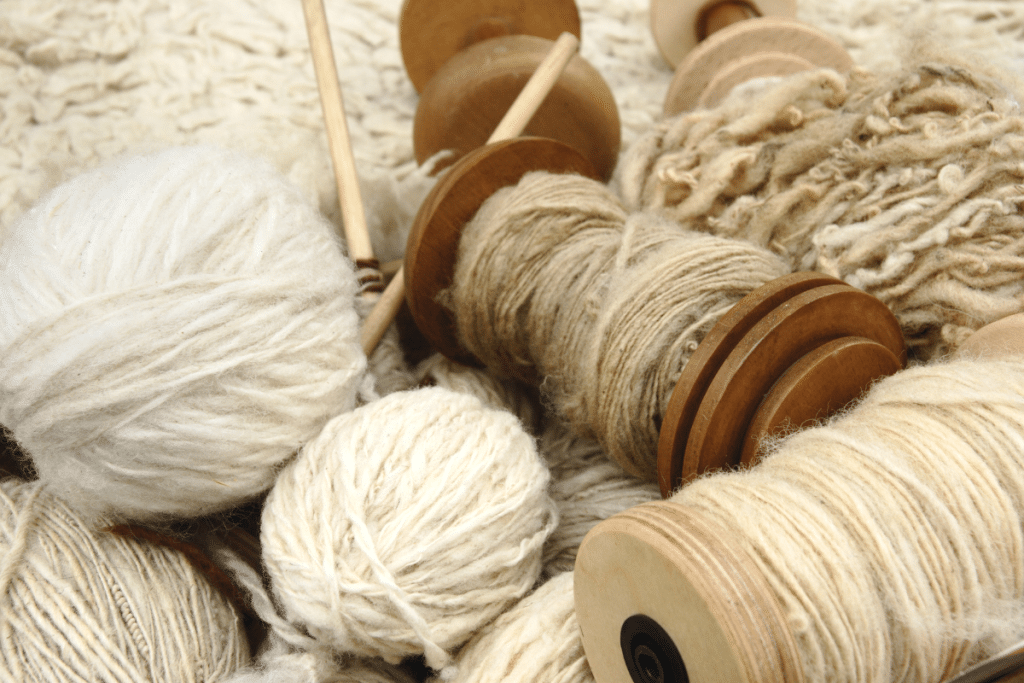
Yarn density is calculated by dividing yardage by weight, which is typically in ounces or grams. If you are consistent, you could stop there (which would be yards per ounce). But, if you want to calculate YPP, you need to multiply that product by 16.
As an illustration:
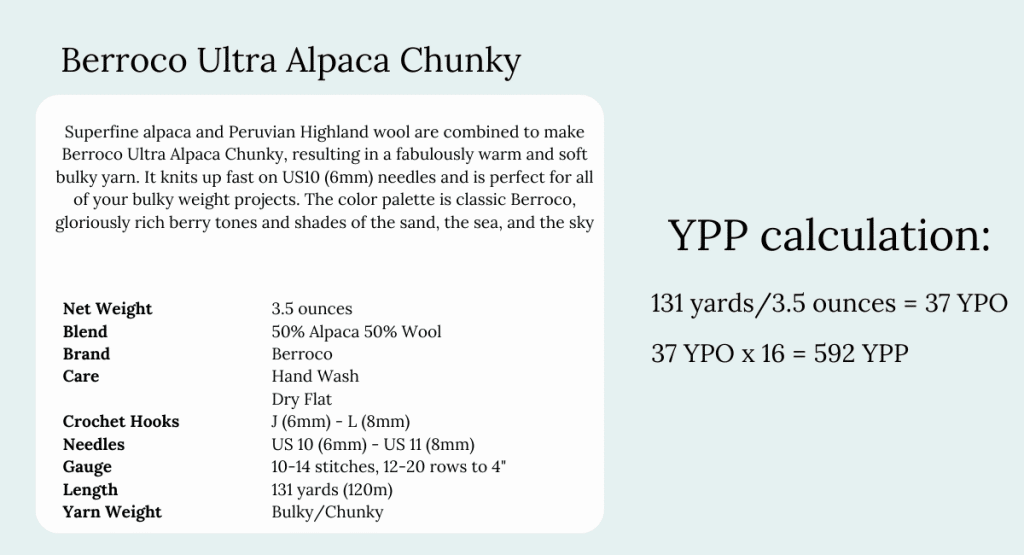
color and texture
When substituting yarn, it’s also important to consider its color, texture, and appearance as it relates to the pattern. If the original yarn has a smooth texture, you may want to substitute it with another smooth yarn. Or, if the original yarn has a fuzzy texture, you may want to substitute it with another yarn with a similar texture.
If the original yarn has a variegated color pattern, you may want to substitute it with another or solid color yarn that complements the stitch pattern. But, if you want the stitch pattern to stand out, I’d stick with a solid yarn as opposed to a variegated one.
combining yarn
Combining thinner yarn to create a thicker yarn is possible, but do it with the understanding that it is not a perfect science. You will definitely want to swatch any yarn combinations to see your gauge and the resulting drape of the knit fabric. Some possible combinations:
- Two strands of sport weight yarn can equal one strand of bulky weight yarn.
- Worsted weight yarn can be made by combining a strand of sport weight yarn and a strand of fingering weight yarn.
- Two strands of worsted-weight yarn can equal one strand of aran-weight yarn.
- One strand of worsted weight and one strand of fingering weight can equate to one strand of sport weight.
- Try two strands of lace-weight yarn to equal the fingering weight yarn.
pattern characteristics
So many of the considerations of yarn substitutions are interrelated. We’ve talked about the drape, the elasticity, and the stitch definition of different fibers. Make sure to fully appreciate the characteristics that attract you to specific knitting patterns you hope to recreate. Is it a beautiful cable, or is it a light and airy shawl? Are you looking for a squishy, soft, and warm sweater? Do you want the blanket you knit to be machine washable?
The cotton yarn I used to knit this argyle baby blanket created a lovely, very crisp stitch definition. You wouldn’t have that definition with a fuzzy alpaca, cashmere, angora, or a single-ply yarn. For crisp stitch definition stick with smooth yarns like cotton, silk, linen, acrylic and merino wool. Additionally, stick with a multi-plied yarn.
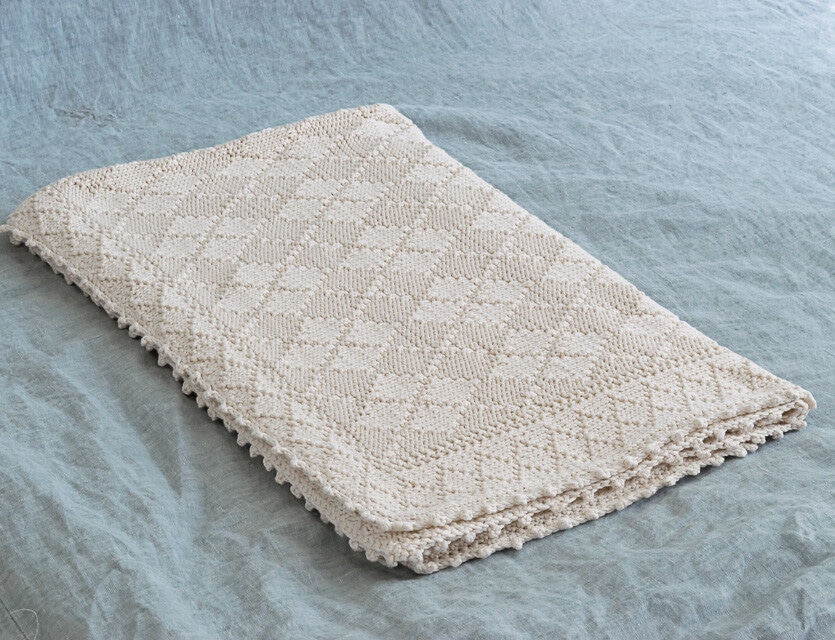
Once you identify what you want from the pattern, make sure you choose a yarn that will get you there.
ravelry + yarn sub
Two great resources for finding yarn substitutions are ravelry.com and yarnsub.com. Both are free websites. Ravelry has a wealth of information about yarns and patterns. If you are looking at a yarn that you can’t find at your LYS, do some research on Ravelry to see how other knitters have used it in their projects. You can get a sense of how the yarn works in a variety of ways.
Yarn.sub is simply an algorithm that will find suitable yarns based on all these factors we’ve discussed. I do use yarn.sub, but it is limited as every yarn is not listed.
make sure you get enough yarn
Once you’ve found the yarn you want to use, divide the length of yarn you need (meters or yards) by the length of the yarn in the skein you’ve chosen. This will tell you how many skeins you need to buy.
a yarn substitution example
You plan to knit a warm, cozy, big, chunky blanket. For illustration purposes, let’s assume the pattern suggests 1300 yards (10 skeins) of Berroco Ultra Alpaca Chunky or similar yarn. You just don’t love the Berroco yarn and want to substitute it with a new one. So, you pop over to your favorite online yarn store or LYS and start looking at bulky yarns.
You find one similar and are excited because this Rowan Brushed Fleece comes in a gorgeous fuchsia! Let’s look at the labels.
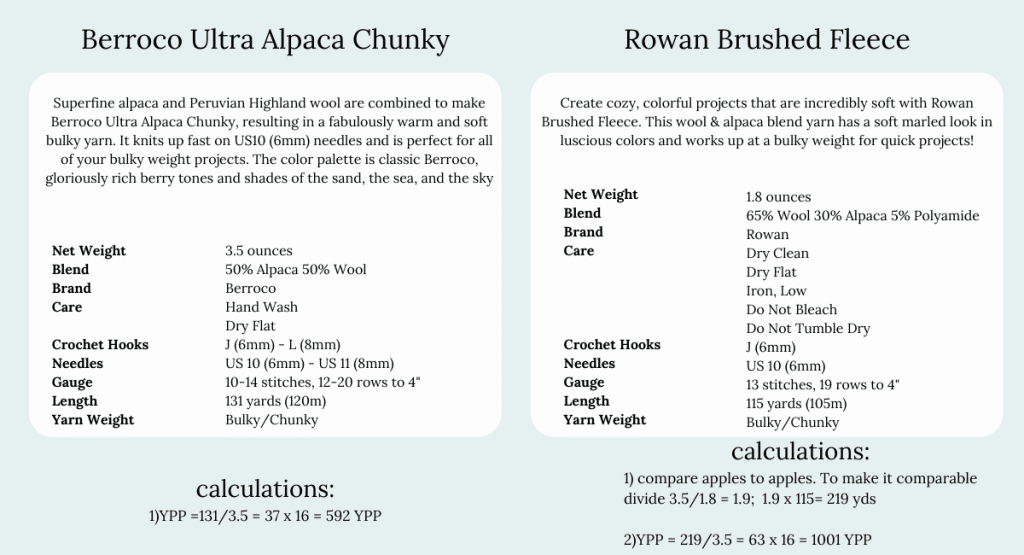
so, let’s work down our checklist for yarn substitutions!
Yarn Weight and Yarn Gauge They are both bulky yarns that have very similar gauges using the same needle size.
Yarn Fiber Content The content is similar: Berroco is 50% Alpaca 50% Wool, and the Rowan is 65% Wool 30% Alpaca 5% Polyamide.
Pattern Characteristics The pattern is for a big, chunky blanket, and they both seem that they will get you there.
So, you are feeling good! Same yarn weight, similar content, similar gauge…and that gorgeous fuchsia! You figure you’ll need 12 skeins of the Rowan Brushed Fleece for your blanket. (1300 yards/115 yards = 11.3 skeins). So you gather them up and head to the counter.
But something in the back of your head reminds you that you read this post on Yarn Substitution, and there was one more thing you were supposed to check! What was it? Argh!
And then you remember!
Yarn Density!!!
Take a look at the YPP at the bottom of the graphic above. The Berroco has a YPP (yards per pound) of 592, while the Rowan has a YPP of 1001. Every pound of Berroco has 592 yards, while every pound of Rowan has 1001 yards. Essentially, the Berroco weighs almost twice as much as the Rowan.
Another way to calculate that:
- 10 skeins of Berroco knit up will weigh 2.2 pounds (10 x 3.5 ounces = 35, 35 ounces/16 = 2.2 pounds)
- 12 skeins of Rowan knit up will weigh 1.3 pounds (12 x 1.8 ounces = 21.6, 21.6 ounces/16 = 1.3 pounds)
Wow!
That was a truckload of information! I sure hope it was helpful. If anything needs clarification, please don’t hesitate to reach out to me. My goal is to make sure that this is helpful information to everyone of all skill levels.
Bookmark this page or pin the following image to refer back to this article on Yarn Substitution in the future.
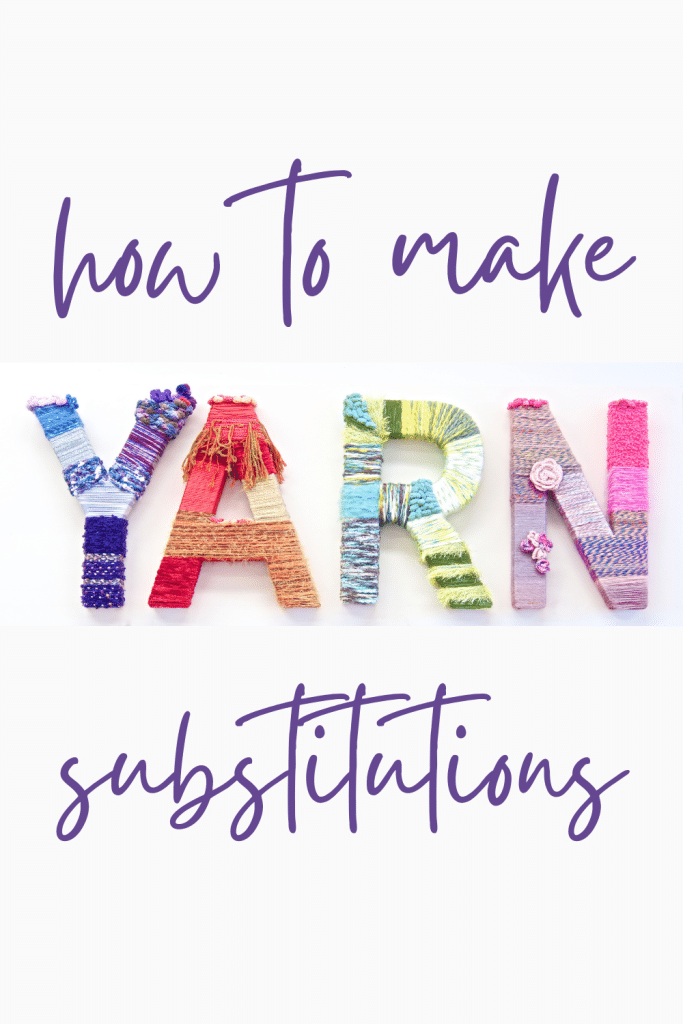
Thanks so much for spending a few minutes of your busy day with me!
To ensure you don’t miss future content, pop your email in the pale green box on the right or click here. I usually send one email weekly, so I won’t inundate your inbox. I’m sensitive to an overflowing email inbox!
We will only use your email address to send you emails, no more than 1-2 weekly. In addition, you will have access to my growing library of knit & crochet patterns and other printables. Check back often as this library will continue to grow. You can unsubscribe anytime by emailing me or clicking on the “unsubscribe” link at the bottom of all emails.
And you can access many of the products I refer to on my Nourish and Nestle Amazon Page. You can access it here.
So, if you’d like to participate in the ‘subscriber benefit’ action, simply subscribe to Nourish and Nestle here or use the form on the right sidebar. It’s slightly towards the top.
I have sent all my subscribers the link to the Subscriber Benefits Library. If you missed it or misplaced it, let me know.
Until next time…


